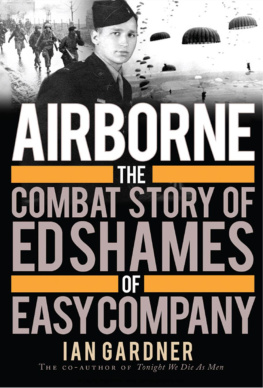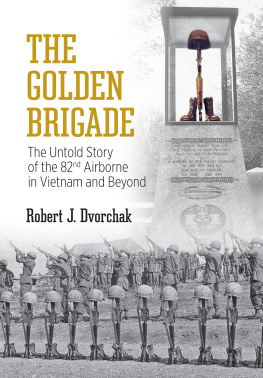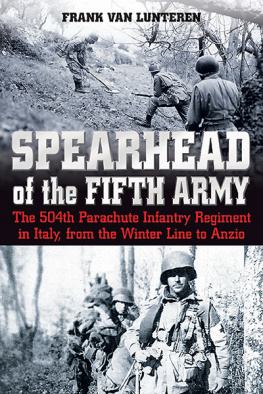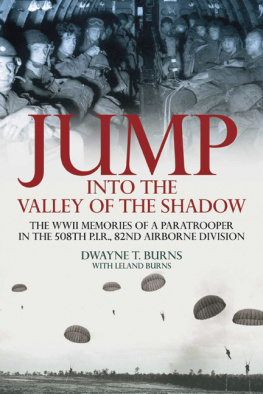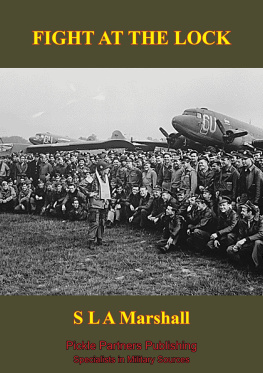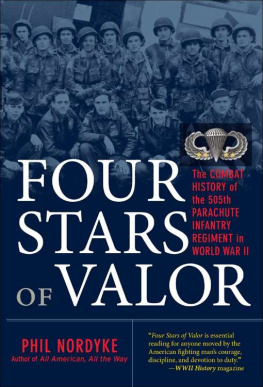
Praise for Descending from the Clouds
A distinguished airborne combat leader in the 505 PIR, Spencer Wurst has given us an inspiring memoir about how, at the platoon level, we defeated the best of the Wehrmacht. You will never read a more authentic and riveting account of airborne and combat operations at the cutting edge of our Army in WW II. Descending from the Clouds is a must read book.
Lt. Gen. John Norton (Ret.), G-3, 82d Airborne Division, World War II
Colonel Wurst (ret.) has written a straight-forward, no-frills account of his combat service. A rifleman with the 82d Airborne he recounts in a subdued yet graphic narrative what he saw through three combat jumps into Italy, France, and Holland, followed by more intense combat in the Bulge and the Heurtgen Forest in Germany. Wursts book ranks as one of the best war memoirs written by a World War II veteran. Highly recommended.
Library Journal, December 2004 (starred review)
Wurst takes the reader through familiar battlesfrom early operations in Sicily to the Battle of the Bulge. His writing is conversational. His combat sequences are chilling, but it is the time between battles and the small details that hold the reader. For example, how he starts the Battle of the Bulge with a champagne hangover.
The Fayetteville Observer, October 20, 2005, review by Keven Maurer, best-selling author of No Easy Day: The Firsthand Account of the Mission that Killed Osama Bin Laden and Gentleman Bastards: On the Ground in Afghanistan with Americas Elite Special Forces
A riveting account by an NCO in one of the most elite parachute infantry companies of World War II. A powerfully written, unvarnished memoir of close combat, with its attendant horrors, valor, and devotion to duty and comrades, Descending from the Clouds is a modern classic. I highly recommend it for anyone interested in World War II combat and Americas elite airborne forces.
Phil Nordyke, author of All American All the Way: The Combat History of the 82nd Division in World War II and
Four Stars of Valor: The Combat History of the 505th Parachute Infantry Regiment in World War II
One really needs more than 5 stars to rate this book. It deserves 7 or 8 stars. I have read many accounts from veterans of the 82nd Airborne Division and this is by far the best. If one is interested in knowing what it was like to be a WWII paratrooper day by day, battle by battle, one absolutely must read this book.
Ellen Peters, reader review, Amazon.com
Descending from the Clouds
A Memoir of Combat in the 505 Parachute Infantry Regiment, 82d Airborne Division
Spencer F. Wurst and Gayle Wurst
Where is the Prince who can afford so to cover his country with troops for
its defense, as that ten thousand men descending from the clouds may
not in many places do an infinite deal of mischief, before a force
could be brought together to repel them?
Benjamin Franklin, 1784
To all the Company F, 505 Parachute Infantry Regiment World War II
veterans, and especially to those among them who never had the opportunity
to grow old in our wonderful nation. And to Millie, the most devoted, kind,
and gentle wife a man could ever ask for.
Spencer F. Wurst
To the memory of my father, Vern Edward Wurst (19211959).
Gayle Wurst
On his way to war. Corporal Spencer Wurst, sitting for a formal portrait in Alexandria, Louisiana, in March 1942. Author
Preface
The first time I went up in a plane I jumped out of it. It was late September 1942, and I was seventeen years old. I had lied about my age when I joined the military, so I had already served two years when I earned the right to blouse my trousers as a graduate of the Parachute School at Fort Benning. During most of World War II, I was a member of Company F, 505th Parachute Infantry Regiment, 82d Airborne Division, in which I served from July 1943 to August 1945 in the European Theater of Operations (ETO), where I made three of the regiments four combat jumps, dropping in Italy, Normandy, and Holland.
Unlike the 101st Airborne and all other airborne units, the 82d had to develop very quickly under the pressure of crucial training directed at its early combat operations in Sicily and Italy. The training, tactics, organization and everything else that had to do with parachute troops were completely new, and we could not afford the time to perfect procedures before heading off for combat. The United States had no doctrine about airborne warfare, and the Army had never written anything about parachute operations: we wrote the book as we went along, and we added, changed, and deleted as we matured.
From the time I was assigned to the regiment in July 1943 up to VE-Day, the Allied victory in Europe on May 8, 1945, I was a rifleman in the 1st Squad, 3d Platoon of F Company, 2d Battalion, 505, where I moved up from private to squad leader, platoon sergeant, and platoon leader. Historians, biographers and generals have chronicled the proud history of the 505 and the 82d Airborne, their leaders lives, decisions and military strategies, and I think its fair to say that not many of these works have escaped me. More recently, a number of excellent books have at last begun to communicate the reality of the rank-and-file on the line, including memoirs by soldiers themselves. But to date, these memoirs have most often portrayed the experience of a single campaign. Never, to my knowledge, has anyone sat down to trace his evolution as a front-line parachute infantryman throughout the entire course of the war. This is what I have attempted to do in this memoir.
To the extent that my story is representative, it is the story of how the rapid evolution of airborne warfare during World War II shaped and was shaped by front-line parachute infantry soldiers. In showing how I fared through all the campaigns of the 505 from Sicily through the Ardennes, Ive tried to convey the day-to-day reality, thoughts, hopes, fears, and fates of fellow paratroopers, as well as the abundant sense of irony and black humor present at the front. I felt it was especially crucial to show how we adapted and developed our fighting skills, and how we were transformed as individuals and human beings under the pressure of extensive periods of combat. On this ability to quickly adapt depended our survival, as illustrated by an epitaph in the mock cemetery at Fort Benning:
Here lie the bones of Lieutenant Jones
A graduate of this institution,
He died on the night of his very first fight,
While using the school solution.
No matter how well we learned this lesson, facts beyond our control enormously influenced our casualty rates. Today almost nobody remembers that the practice of individual rotation did not begin until the Korean War, when the Army started developing a one-year policy that
There is, of course, the problem of memory. Combat is an odd experience. Your point of view may differ from that of the person right next to you in the squad or even your fire team. One unit may have a much tougher time than another unit right next door. Experiences vary, and trying to reconstruct and articulate them so long after they occurred only complicates the problem. Rarely as a lowly privateor as a squad sergeant or even a platoon sergeantdid I have the full picture of what was going on. Our objectives were immediate: stay alive, assemble after a jump, get on with the duties at hand.



